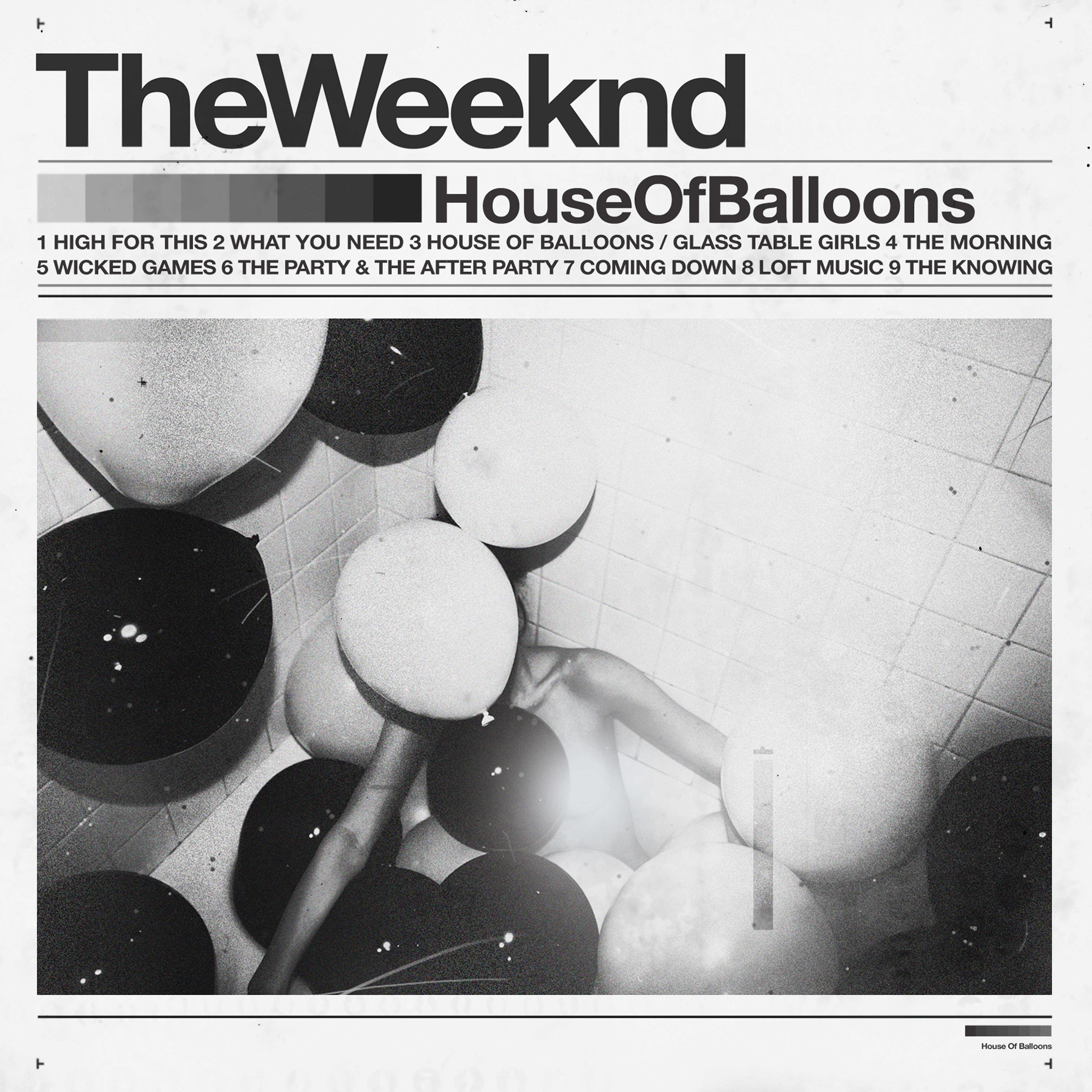My first exposure to The Weeknd was in the summer of 2015 with his smash hit “Can’t Feel My Face.” I remember the buzz around my high school at the start of a new year, when we grooved to the funk rhythms and laughed over The Weeknd’s pineapple-like hairstyle. At first, we thought we were mouthing along to a tale of romance. Then, we found out the truth: We whispered to each other, wide-eyed, “Did you know that ‘Can’t Feel My Face’ is actually about cocaine?” To 9th graders, it was a shocking revelation that a Billboard-topping single could be about such a taboo substance.
A darker, elusive truth underneath the façade of glamour. This theme is omnipresent in The Weeknd’s entire discography, from his murky beginnings in 2011 to the record-breaking success of his latest album “After Hours” in 2020. Ten years after the original release of “House of Balloons” on March 21, 2011, now is a crucial moment for music lovers to look back on the roots of this brilliant R&B artist.
The lyrical message of HOB is simple. Abel Tesfaye’s debut single, “Wicked Games,” clearly spells out his truth: “Bring your love, baby, I could bring my shame / Bring the drugs, baby, I could bring my pain.” Throughout the mixtape, The Weeknd speaks of loving, manipulating and sleeping with women; combined with drugs, alcohol and partying, these vices make up The Weeknd’s entire life. However, the devastating and gritty production enveloping these words of decadence ultimately leads me to believe that Tesfaye is left feeling hopeless and empty at the end of these pleasures. Immersed in HOB’s atmosphere of self-loathing and dread, I always marvel at the unforgettable moods and sounds of this mixtape.
From the opening moments of “High For This,” a mysterious warbling pulls you into Abel Tesfaye’s abyss. The Weeknd denies responsibility for the sins and destructions of his underworld, singing, “You don’t know what’s in store / But you know what you’re here for … Trust me girl, you wanna be high for this.” These words are as much of a caution for the listeners as they are for the girl.
After the deceptively calm track “What You Need,” the mind-numbing club bass of “House of Balloons / Glass Table Girls” kicks off what I believe to be the best three consecutive tracks on this project. This titular two-part track is brilliant in creating the dizzying and ominous soundscape of a party with no limits. The Weeknd looks for “two puffs for the lady who be down for that,” and the dense layers of the instrumental hypnotize the listeners as if they are growing more intoxicated by the atmosphere of this mixtape.
“The Morning” features The Weeknd’s very best songwriting. With astonishing guitar melodies, refreshing synth waves and The Weeknd’s shimmering voice telling a whirlwind tale of vice, “The Morning” is undoubtedly one of the best R&B tracks of the 21st century. Tesfaye sets the scene of his frenetic and exhilarating life: “Drinking Alizé with our cereal for breakfast / Girls calling cabs at dawn, quarter to seven.” He also meditates on the trajectory of his career while at the brink of mainstream recognition: “Push it to the limit / Push it through the pain / I push it for the pleasure like a virgin to the game … The higher that I climb / The harder I’ma drop.” His prophecies are chilling, full of almost venomous ambition.
Then, the breakout single “Wicked Games” sits squarely in the middle of the tracklist. This song is exquisitely crafted, with stunning crescendos that evoke the sounds of rock bands. The Weeknd’s voice conveys urgency, but it never sounds strained; he has expert control over his singing.
The Weeknd takes his music in yet another unexpected direction with the most melancholy song on the mixtape: “The Party & The After Party.” Throughout HOB, he samples musicians who are completely unexpected for an R&B project, including Beach House and Cocteau Twins. The intense melodies of previous tracks continue unravelling in the remorseful and more minimalistic “Coming Down.” The impressive, unconventional “Loft Music” is next — it is a single-verse song, and the lyrical density of this track provides momentum for the severely underrated closing song, “The Knowing.” As The Weeknd tells of his partner’s and his own infidelity, he says, “It don’t hurt like you thought it would … the more of you the merrier.” The ambiguity — whether or not he is satisfied with his life — provides the infinite allure of this mixtape.
It’s stunning to think that Tesfaye released this mixtape at 21 years old. The vocal talent, songwriting and production — handled primarily by Doc McKinney and Illangelo — show a fully realized artistic vision that surpasses even the most seasoned musicians. The Weeknd paints soundscapes of beaten-down basements and blurry memories, setting the standard for alternative R&B of the 2010s and beyond.

What to make of the frightening levels of debauchery? YouTube comments under his “House of Balloons” music videos constantly describe the songs as featuring “the voice of an angel, the words of the devil.” In 2013, The Weeknd confessed on Reddit that “all of” his lyrics come from his actual experiences. In truth, I feel that this level of freedom was only possible because of his anonymity back in 2011. I can hardly imagine him releasing a record so riddled with tales of cocaine now when he is mainstream enough to perform at the Super Bowl halftime show.
The mixtape beckons us to wrestle with our fetishization of destructive lifestyles. Drugs, sex and partying are everywhere in music, and listeners love it. However, in HOB, “the drugs are harder, the come-ons feel predatory and lecherous, and the general feeling is self-hating rather than celebratory,” as described by Pitchfork. The words — delivered in achingly beautiful singing — also express abandon and nihilism.
I want to refrain from making absolute declarations like “The Weeknd regrets these days!” or “The Weeknd is proud of these days and glorifying them!” The Weeknd presents us his narrative, which is that of a partier who loves his vices but struggles with the consequences. The lyrical content may be despicable, but it is frank. And I can’t help but be addicted to this mixtape for it.
It’s good that 10-year-old me didn’t listen to songs about drugs, sex and partying when HOB was released in 2011. But I’m glad that 19-year-old me discovered this previously unknown side of The Weeknd last year. 2015’s “Beauty Behind the Madness” was The Weeknd’s first Billboard-200-topping album, but I didn’t bother to explore what he released prior to that project until recently. Initially, the depravity of “House of Balloons” shocked me. Then, I grew to appreciate the singular and daring vision of The Weeknd’s early days. I still believe “House of Balloons” is The Weeknd’s best project. I invite you to take a deep dive into this brilliant and eerie mixtape.
